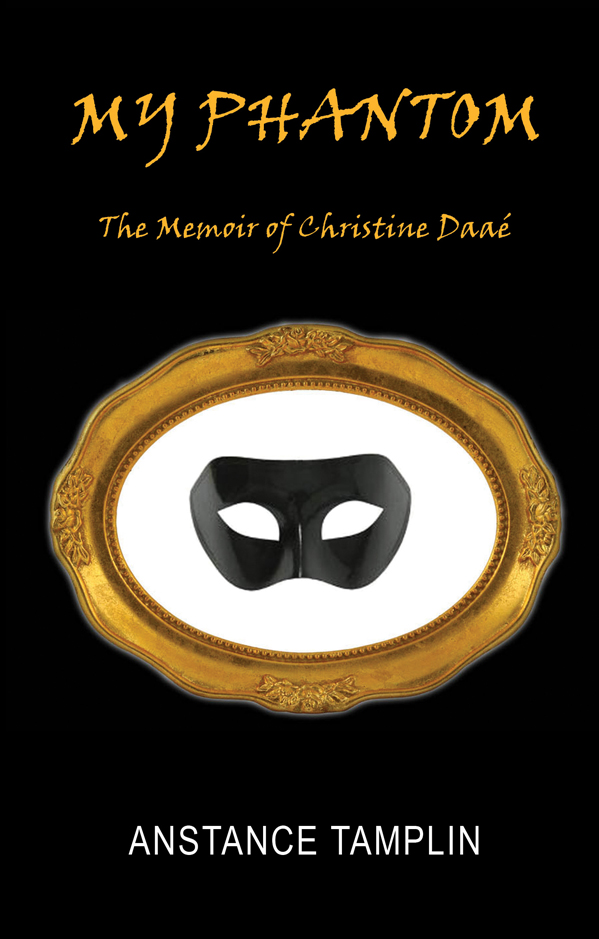My Phantom: Reading Group Guide
 1. The most well-known and beloved classic French fairy tale is undoubtedly Beauty and the Beast, and over the years many readers have noted parallels in Gaston Leroux’s The Phantom of the Opera. In what ways does Anstance Tamplin’s My Phantom parallel the fairy tale and in what ways does it parallel Leroux’s horror novel? In what ways does Tamplin’s novel differ from those classics? In motifs and themes is Tamplin’s novel ultimately a retelling of the fairy tale or a re-imagining of the horror novel?
1. The most well-known and beloved classic French fairy tale is undoubtedly Beauty and the Beast, and over the years many readers have noted parallels in Gaston Leroux’s The Phantom of the Opera. In what ways does Anstance Tamplin’s My Phantom parallel the fairy tale and in what ways does it parallel Leroux’s horror novel? In what ways does Tamplin’s novel differ from those classics? In motifs and themes is Tamplin’s novel ultimately a retelling of the fairy tale or a re-imagining of the horror novel?
2. In 1831 Victor Hugo published his novel Notre-Dame of Paris, perhaps the first international blockbuster in literary history, which was set in part in an iconic Paris building, the Cathedral of Notre Dame, featured a deformed misanthrope, the hunchback Quasimodo, and an innocent young beauty, the gypsy Esmeralda. Eighty years later Gaston Leroux employed the identical elements in writing The Phantom of the Opera, which now have been used again by Anstance Tamplin in her novel. Discuss you reaction to contemporary retellings and re-imaginings of classics. Are such works literary theft by lazy writers or acts of homage by dedicated fans?
3. In the opening paragraph of her memoir Christine Daaé clearly states her purpose: to show that her Phantom “was not a terrifying monster but a mesmerizing man.” Did she succeed? If so, what persuaded you that he was a mesmerizing man? If not, what convinced you that he was a terrifying monster?
4. My Phantom unfolds solely from the viewpoint of Christine Daaé and relies completely on her interpretation of individuals and events. Her memoir recounts how the Phantom surreptitiously manipulates people and events to achieve his goals at the Paris Opera. Several times Christine suspects that she, too, is being manipulated to serve his ends yet she always gives the Phantom the benefit of the doubt. Should she? If so, why? If not, why not?
5. With each of the two men who love her, Christine foresees a different future: “The Phantom would make me a star with a public life devoted to art. Raoul would make me a wife with a private life devoted to family.” What is the source of her inability to imagine a life of public and private fulfillment: herself, her time or her art?
6. Time and again Christine points out the ways in which her background is similar to the Phantom’s and the ways in which Raoul’s background differs from her own. Is her attraction to the Phantom due to those similarities? Are her doubts about Raoul due to those differences?
7. For most of her memoir, Christine is struck by the contrasts between the Phantom and Raoul. Not until quite late in the novel does she realize that the two men also have similarities. What are they?
8. My Phantom is set during the dawn of celebrity culture when increasing literacy led to the creation of mass circulation newspapers and magazines that fed the public’s appetite for information about the stars of the day. Compare and contrast how Christine, the Phantom, Raoul and other characters in the novel react to the uses and abuses of the new culture of celebrity.
9. In the 19th century the arts in France were dominated by the Académie des Beaux-Arts, a learned society that passed judgment on painting, sculpture, music and architecture, promoting artists whose work featured approved subjects and styles and deriding those whose work broke the rules of academic art. Chief among the derided were the Impressionist painters whose works depicted the ordinary life of the day and whose innovations inspired artists in other mediums, including the Phantom. Discuss the Phantom’s view of “vanguard” painters and the specific ways he brought their artistic revolution to the Paris opera.
10. The Phantom’s main complaint about the grand opera so popular in France in the 1870s was that it consisted of “grotesque pageants of rulers” that were inappropriate for “the republican citizens of France,” a nation where “today the people rule.” Discuss the realism of the Phantom’s staging of Romeo et Juliette and how such a production would be greeted by the audiences in Paris in 1880 and your home town today.
11. My Phantom ends with three letters written by Christine Daaé’s descendants. Why did Anstance Tamplin choose to end Christine’s memoir with those letters? Did their inclusion add to or detract from your overall satisfaction with the novel?
12. Since the publication of Gaston Leroux’s novel in 1911, the legend of the Phantom of the Paris opera house has been retold in at least four novels, three stage plays and ten films. Why has the story endured as an audience favorite for almost a century? How does Anstance Tamplin’s novel My Phantom measure up or fall short of earlier versions of the legend?
Copyright 2009 by Straight Up Press of text, design and photos. All rights reserved. Reproduction in whole or in part without permission is prohibited.
No Responses to “My Phantom: Reading Group Guide”